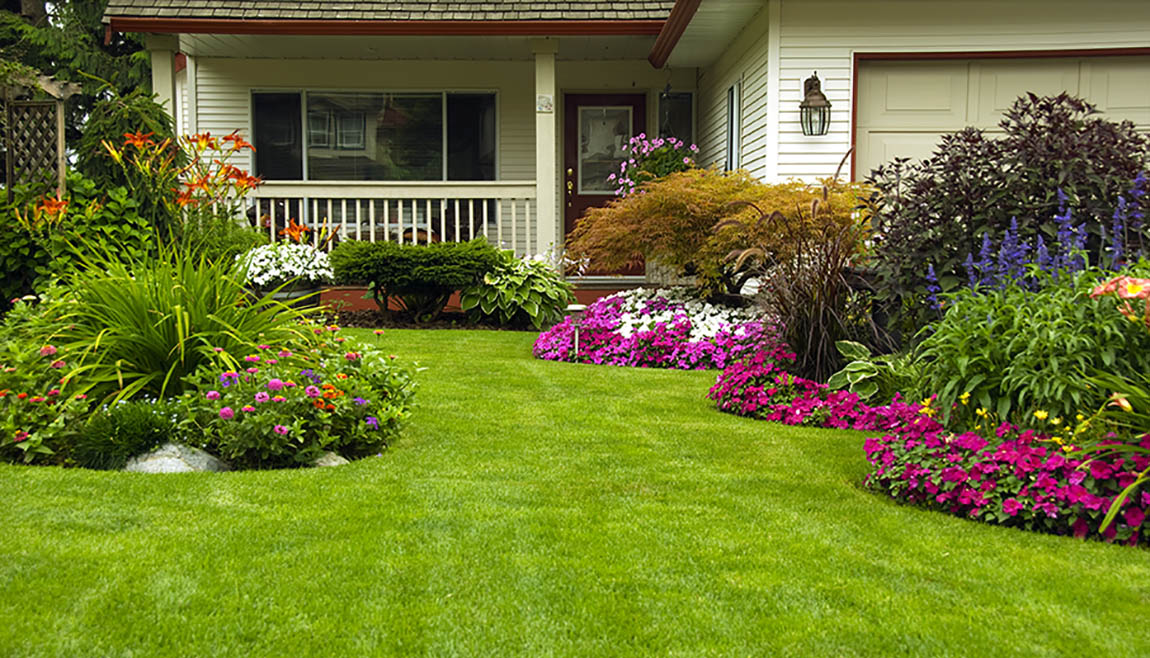How to Protect Plants when Soft Washing

Soft washing uses professional-grade sodium hypochlorite (bleach) to kill Gloeocapsa Magma, which is a type of algae that leaves ugle black streaks on roofs and siding, causing damage in the process. Bleach also works to kill and remove other organic matter such mildew, moss, and lichen from homes and buildings. The problem is that while bleach is great at killing the organic matter from roofs and siding, it can also kill the plants, trees, shrubs, flowers, and grass around your customers’ homes and buildings.
While there are no guarantees you won’t kill or damage plants, there are things you can do to greatly minimize the risk.
1. Bag the downspouts. If you're roof cleaning and the the home or building’s gutters are working properly, your soft wash solution is going to run to the gutters and out the downspouts. Fastening a large trash back to the bottom of the downspout can help you collect the runoff and minimize damage caused by the bleach.
Generously pre-wet all the plants around the house before cleaning, paying special attention to those that are directly below the roof line. You can use a garden hose for this, or if you are using a pressure washer, the X-Jet M5 Variable Nozzle can be twisted to a fan spray and used to rinse the plants with clean water. Because the X-Jet is an external chemical system, your cleaning mix shoots only through the nozzle, not your system, and you can easily switch from your cleaning mix to water only.
3. Use a surfactant. Adding a surfactant, like ProTool Sticky, to your soft washing mix helps your sodium hypochlorite cling to roofs, siding, and other surfaces longer. This not only helps reduce the amount of mix you need to clean, it helps protect the plants below by reducing runoff, all while saving you time, energy, and money.
ProTool Sticky is super concentrated:
- Uses only 10 ounces per 50-gallon batch.
- Reduces your shipping costs 75% by only shipping product, not water
- Offers the LOWEST cost per batch in the industry!
4. Rinse again thoroughly with water. Once you've soft washed an area, you need to go back and rinse the plants again, making sure to water the leaves, roots, and surrounding ground to make sure that everything is fully hydrated.
5. Neutralize with ProTool Post Rinse.
While water can do a lot towards protecting Metal Fixtures, Ornamentation and plants during soft washing, your safest best is to neutralize any soft washing runoff that may be left on the plants. This is where the ProTool Post Wash comes to the rescue!
ProTool Post Rinse is used to neutralizing agent designed to neutralize houses and buildings, decks, fences, etc., after soft washing, and can also be safely applied to plants.
Metal Surfaces, Plants Protector/Neutralizer
ProTool Post Rinse helps to protect plants as well:
1. Neutralizes the soft washing solution
2. Coats the leaves with a protective buffer
For a minimal cost, adding Post Rinse to your soft washing procedures can help protect you from causing damage both to metal fixtures and ornamentation, plants and your company's reputation!
4. Plants - Nourishment
Using water to rinse the plants is an important part of the Softwashing process. We also recommend plan nourishment
Plant Wash was designed to reduce the damage to plants associated with caustic cleaners like sodium hypochlorite and sodium hydroxide. Plant Wash attacks these issues in four ways:
1. It neutralizes the caustic cleaners;
2. Liquid fertilizes the plant through their leaves;
3. It coats the leaves with a buffering agent;
4. It adds back vital nutrients at the base of the plants, helping beneficial bacteria repopulate the soil.


We recommend the use of a garden sprayer for dry powder to mix and spray on the plants.




